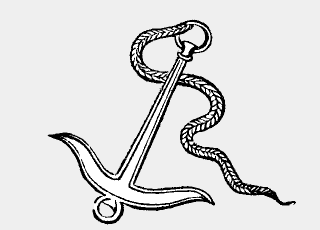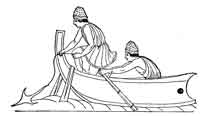.
Acoustics in Theaters
So the vessels called yheia by the Greeks, which are placed in certain recesses under the seats of theatres, are fixed and arranged with a due regard to the laws of harmony and physics, their tones being fourths, fifths, and octaves; so that when the voice of the actor is in unison with the pitch of these instruments, its power is increased and mellowed by impinging thereon. Vitruvius, de Architectura
Book 5, Vitruvius about Theaters
The Greeks did, however, develop one acoustical device of considerable value: the masks worn by actors. In addition to providing exaggerated facial expressions appropriate to the various roles, the masks served as megaphones that improved the mechanical coupling between the voice-generating mechanism and the surrounding air. From Architectural Acoustics See also
Identification, Evaluation and Revival of the Acoustical heritage of ancient Theatres and Odea
http://www.at.oersted.dtu.dk/~erato/EratoWP5_files/BNAM_paper_04.pdf
S.R. Shankland, Acoustics of Greek theatres. Physics Today (1973) 30-35.
S. Vassilantonopoulos and J. Mourjopoulos, “Acoustic simulations of Ritual and Public spaces of Ancient Greece”, presented at the Hellenic Institute of Acoustics 2002 conference, Patras, October 2002 ( PDF File ) (in Greek)
Vassilantonopoulos S. L., Zakynthinos T.., Hatziantoniou P. D., Tatlas N.-A., Skarlatos D., Mourjopoulos J. N., Measurement and Analysis of Acoustics of Epidaurus Theatre, presented at the Hellenic Institute of Acoustics 2004 conference, Thessalonica, September 2004. (“PDF File) (in Greek)
Aeolian Harp
Aeolian Harps, named after the Greek God of Wind, 'Aeolus', first appeared in Grecian culture circa 6 BC, when Orpheus, the 'original' poet, held poetry readings accompanied by the music of Wind Harps. Much later, artisans of the Renaissance era re-discovered Aeolian Harps, fascinated with both their physical and etheric properties. Much experimentation with the Aeolian principle, i.e., the vibration of strings by wind, led to a variety of designs and installations as illustrated by these two towers.(circa 1695 AD) http://www.harmonicwindharps.com/
The Aeolian harp is a Greek invention, played by the winds. It has a dozen or so strings, all the same length -- about five feet. Each has a different diameter, but they're all tensioned to the same unison pitch. As wind blows over the strings, different overtones are excited on each one. You hear the third, the twelfth, the upper octave. A strange mélange of sound floats above that fundamental unison drone. John H. Lienhard , AEOLIAN VIBRATIONS, Engines of our Ingenuity
Were such instruments build by the ancient Greeks and if not was the instrument and its name (based on Greek mythology) just invented only in the 17th century?
Anaphoric clock

Anchor
592 BC metal with curved arms.
Click to enlarge
The anchor or agkura. We have already remarked that in the Homeric age, anchors were not known, and large stones (eunai, sleepers) used in their stead (Hom. Il. i.436, xiv.77, Od. ix.137, xv.498). According to Pliny (H.N. vii.57), the anchor was first invented by Eupalamus and afterwards improved by Anacharsis (Scythia). Afterwards, when anchors were used, they were generally made of iron, and their form, as may be seen from the annexed figure, taken from a coin, resembled that of a modern anchor (cf. Virg. Aen. i.169, vi.3). William Smith, A Dictionary of Greek and Roman Antiquities, John Murray, London, 1875.
Anacharsis was a Scythian from a region influenced by Greek culture (Cimmerian Bosporus).
The remains of one lately found near Cyrené afford evidence that for a ship of some 200 tons the anchor weighed some 1400 pounds. The anchor was often slung over the stern, and when in use had its position marked by cork buoys (sêmeia ankuras). The cables (ta schoina) were sometimes of chain, but usually of rope. Harry Thurston Peck, Harpers Dictionary of Classical Antiquities (1898)

Anemoscope
A device which shows the direction of the wind. The first such device was used in the Tower of the Winds in Athens
On the top of the roof of this tower a brazen Triton with a rod in its right hand moved on a pivot, and pointed to the figure of the quarter in which the wind lay.
Aerometer
The hydrometer (also called an aerometer) an instrument used to determine the density of fluids is considered an invention of Hypatia. The oldest stories about an apparatus of this kind derive from around the year 400 (Hypatia in Alexandria), but they have apparently been forgotten. The next time an apparatus is mentioned is in Samuel Peppy’s journal on December 9, 1668, where Boyle is displaying one: and did give me a glass bubble, to try the strength of liquors with. Erling Poulsen, The hydrometer, Rømer’s hydrostatic measurements
Alic, M. (1986). Hypatia’s Heritage: A History of Women in Science from Antiquity to the Nineteenth Century. London: Women’s Press Ltd.
Astrolabe
The origins of the astrolabe were in classical Greece. Apollonius (ca. 225 BC), the great codifier of conic sections, probably studied the astrolabe projection. The most influential individual on the theory of the astrolabe projection was Hipparchus who was born in Nicaea in Asia Minor ( about 190 BC but studied and worked on the island of Rhodes. Theon of Alexandria (ca. 390) wrote a treatise on the astrolabe that was the basis for much that was written on the subject in the Middle Ages.
Automata by Heron and others
Heron of Alexandria , See also http://www.history.rochester.edu/steam/hero/index.html and Automata History
Heron's Self-Moving Stand (Heron constructed magic theaters, one of which rolled itself before the audience on its own power, cranked through a miniature three-dimensional performance, and then made its own exit. ) Heron's Mobile Automaton (Real Audio Video) In Greek
SILVIO A. BEDINI, The Role of Automata in the History of Technology

-MARVELOUS ALTAR (According to Heron).
"Fire being lighted on an altar, figures will appear to execute a round dance. The altars should be transparent, and of glass or horn. From the fire-place there starts a tube which runs to the base of the altar, where it revolves on a pivot, while its upper part revolves in a tube fixed to the fire-place. To the tube there should be adjusted other tubes (horizontal) in communication with it, which cross each other at right angles, and which are bent in opposite directions at their extremities. There is likewise fixed to it a disk upon which are attached figures which form a round. When the fire of the altar is lighted, the air, becoming heated, will pass into the tube; but being driven from the latter, it will pass through the small bent tubes and ... cause the tube as well as the figures to revolve."
See Puppet Shows among the Greeks
Kallixenos of Rhodes desribes in a Fragment (FGrHist 627 F2 = Athen.5,201bff.) how in a dionysian procession in Alexandria a figure of Nysa sitting on a car which was moved by 60 men could stand up due to an internal mechanism and poor out milk from a cup and then sit again.
A - B - C - D - E - F - G - H - I- J - K - L - M -
N - O - P - Q - R - S - T - U - V - W - X - Y - Z
| Ancient Greece
Science, Technology , Medicine , Warfare, , Biographies , Life , Cities/Places/Maps , Arts , Literature , Philosophy ,Olympics, Mythology , History , Images Medieval Greece / Byzantine Empire Science, Technology, Arts, , Warfare , Literature, Biographies, Icons, History Modern Greece Cities, Islands, Regions, Fauna/Flora ,Biographies , History , Warfare, Science/Technology, Literature, Music , Arts , Film/Actors , Sport , Fashion --- |


